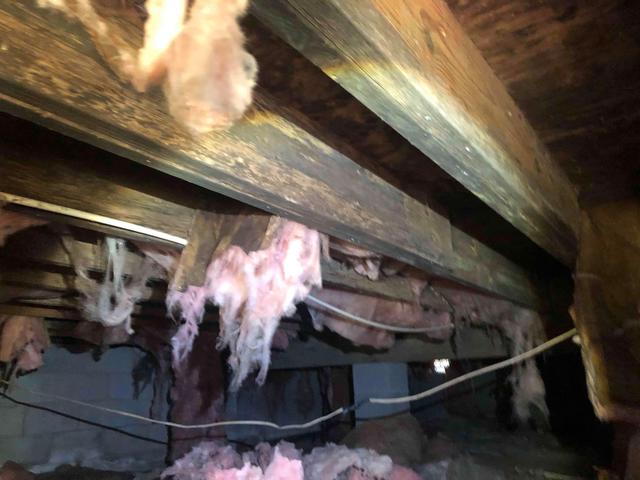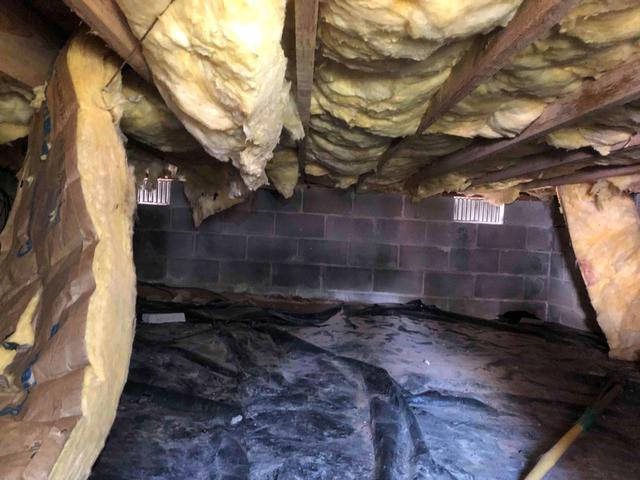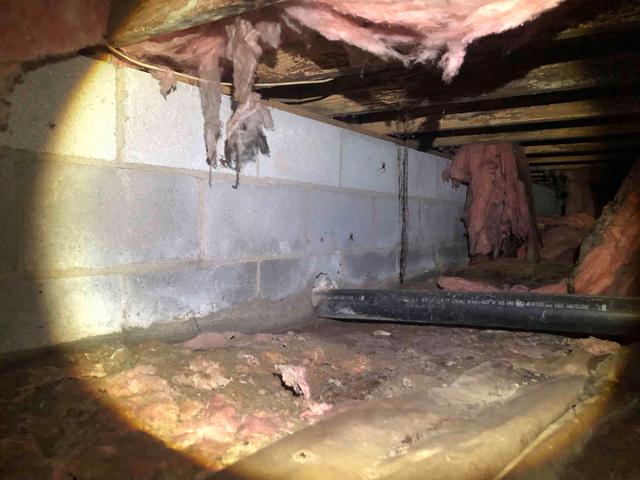
Falling Insulation
Falling insulation is a result of the fiberglass batts absorbing moisture and gravity. As the batts absorb moisture, they become heavier and begin to sag and fall. The moisture damages the fibers of the material and they begin to pull away from one another, making the insulation look like it is dripping.

Mold Growth
Mold needs 3 things to grow; 1. High Relative Humidity, 2. Warm Temperatures, and 3. Organic Material. In a crawl space, the wood substructure of your home and the paper backing of fiberglass insulation are the food source. The insulation and wood absorb the moisture in the air and allow microbial growth to occur. As the moisture in wood increases wood rot can occur beginning at 19% wood moisture content. In addition, this results in poor indoor air quality as approximately 50% of the air in your home comes from the crawl space.

Vapor Barriers
Traditionally, crawl spaces have a 6-mil vapor barrier in them. This liner is similar to the thickness of a trash bag. It is staked down creating holes in the barrier, adding weak points for the material to rip as service persons move through the crawl space. Seams cannot be sealed to each other or to the walls or piers, allowing water vapor to rise into the crawl space and raise the relative humidity.

Crawl Space Vents
Open Crawl Space Vents were intended to allow enough air flow under the home during summer months to prevent moisture from collecting in the crawl space, but it didn't work. Instead, open vents allow outside humid air to flood into the vents, but the moisture is trapped creating a warm damp environment ideal for critters, pests, rodents, and mold growth.

Water Infiltration
Staining on the block walls indicates moisture collecting or working its way through the foundation. The white spots are efflorescence, a result of moisture pulling minerals in the block to the surface. The mud along the perimeter of the crawl space also indicates there is likely bulk water entering the crawl space.

